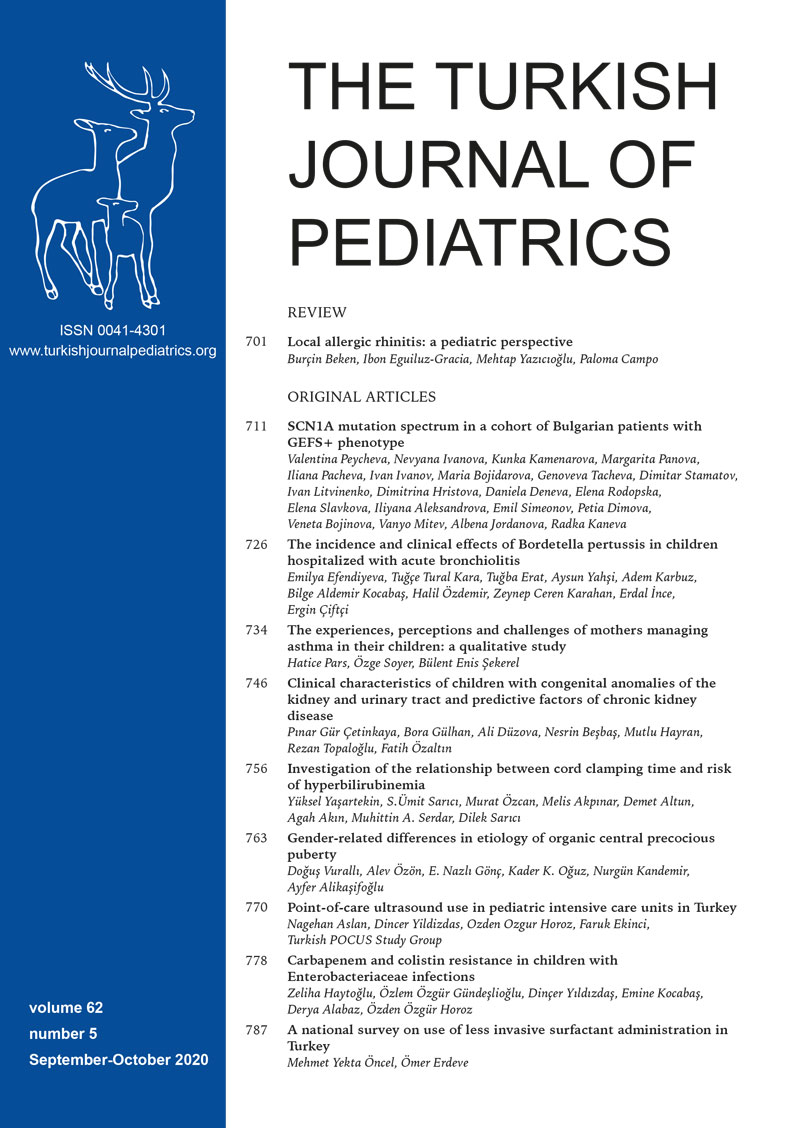Abstract
Background. Ascites is defined as abnormal fluid retention in the peritoneal cavity and it can be encountered at any age including fetal life. Ascites mostly results from cirrhosis, chronic renal disease and heart failure in childhood. However, there are various reasons for cirrhotic and non-cirrhotic ascites in the pediatric age. Cerebrospinal fluid ascites is one of the rarest.
Case. A 3.5- year- old Sudanese boy who underwent right-sided ventriculoperitoneal shunt surgery for hydrocephalus 10 months ago was admitted to the Neurosurgery Intensive Care Unit for intracranial tumor surgery. He had neurologic deterioration and ascites accumulation for the last 4 months. He was consulted with the pediatric gastroenterologist to exclude the reasons causing ascites after admission. No chronic liver, renal or heart disease was shown. The gross appearance of ascitic fluid was so clear that it resembled the cerebrospinal fluid and laboratory analysis results were compatible with transudate. The magnetic resonance imaging identified a mass in the left lateral ventricle. From the pediatrician`s perspective, overproduction of cerebrospinal fluid from a tumor was assumed and shunt exclusion was proposed to alleviate ascites. After the externalization of the stunt and external ventricular device implementation, no further ascites occurred. The patient had a successful tumor excision and discharged after gaining oral feeding ability and sufficient weight gain.
Conclusion. In case of intractable ascites occurrence after a ventriculoperitoneal shunt placement, a pediatrician should consider etiologies resulting in imbalance of absorption and secretion function of cerebrospinal fluid.
Keywords: ascites, choroid plexus papilloma, ventriculoperitoneal shunt
Copyright and license
Copyright © 2020 The Author(s). This is an open access article distributed under the Creative Commons Attribution License (CC BY), which permits unrestricted use, distribution, and reproduction in any medium or format, provided the original work is properly cited.














